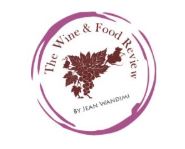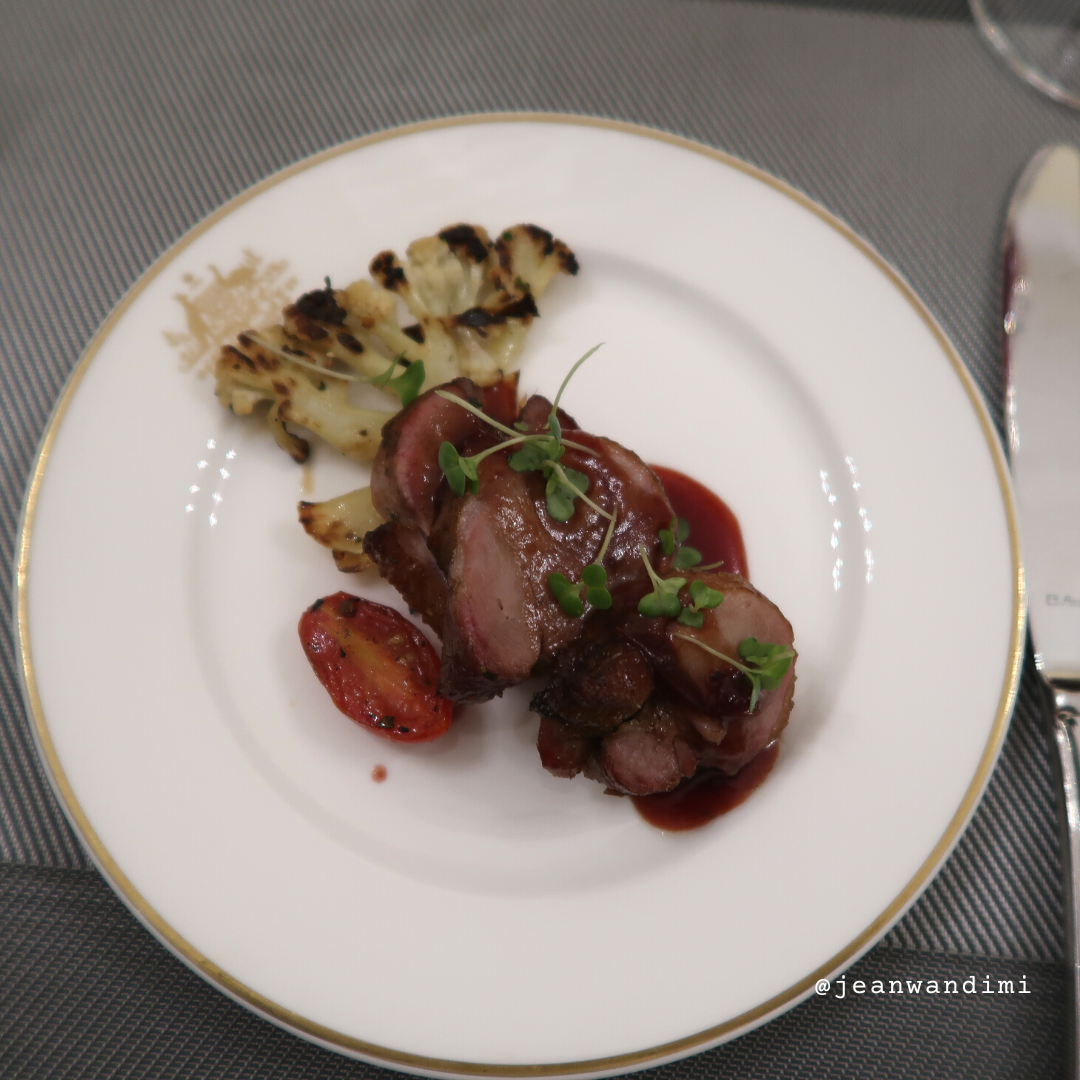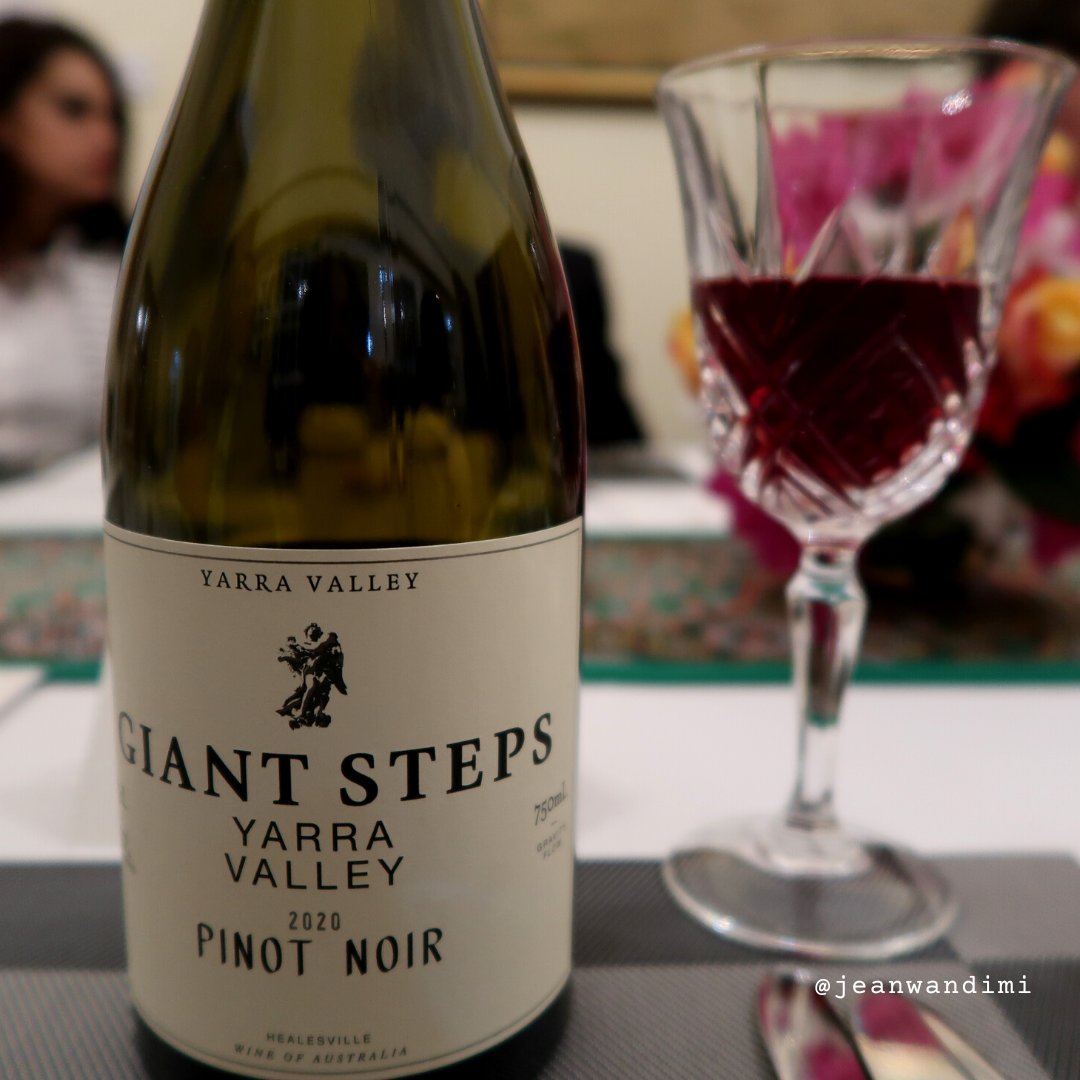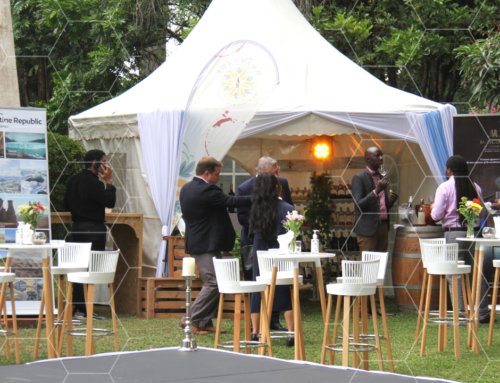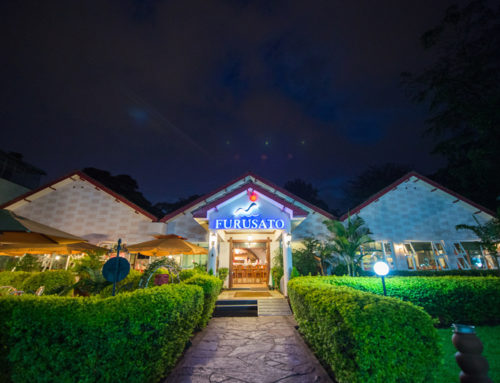Traversing Australia one bottle at a time
Last week, I had one of the notable highlights of my year.
The Australian High Commissioner, H.E. Luke Williams, and Mrs Helen Williams invited me for a degustation dinner paired with unique Australian Wines at their residence.
And when you get such an invite, you drop everything and show up. Arriving at the Australian High Commissioner’s Residence, H.E. Luke Williams and Mrs. Helen Williams warmly welcomed me & other guests who had also started trickling in. We received a welcome wine as we had a chat outside. After about 20 minutes, dinner was served, and everyone took their assigned seats.
H.E. Luke Williams had handpicked 5 wines from Australia. “It is not every day that you get to attend a dinner where the high commissioner is the sommelier for the evening”, someone quipped. He took us through each wine and what struck me was how well he detailed the story of every bottle. He shared the history and notes about the wine, winery and winemakers. We also had a chance to chat with other invited guests about the state of Australian wine in Kenya. I love when I meet fellow wine professionals and enthusiasts because I am always in my element talking about wine.
The table set-up allowed for an intimate dinner where everyone would converse and share different perspectives.

WHITE WINE
As in most dinners, we started the tasting with white wine. The chairs faced each other, and one could easily tell people’s thoughts on the food and wine. It was also easy to speak to everyone. At approximately 1840 hrs, the first wine of the dinner was poured, and the food also promptly arrived after that.
Dawson James Tasmania Chardonnay (2016) paired with octopus and sea fish skewers
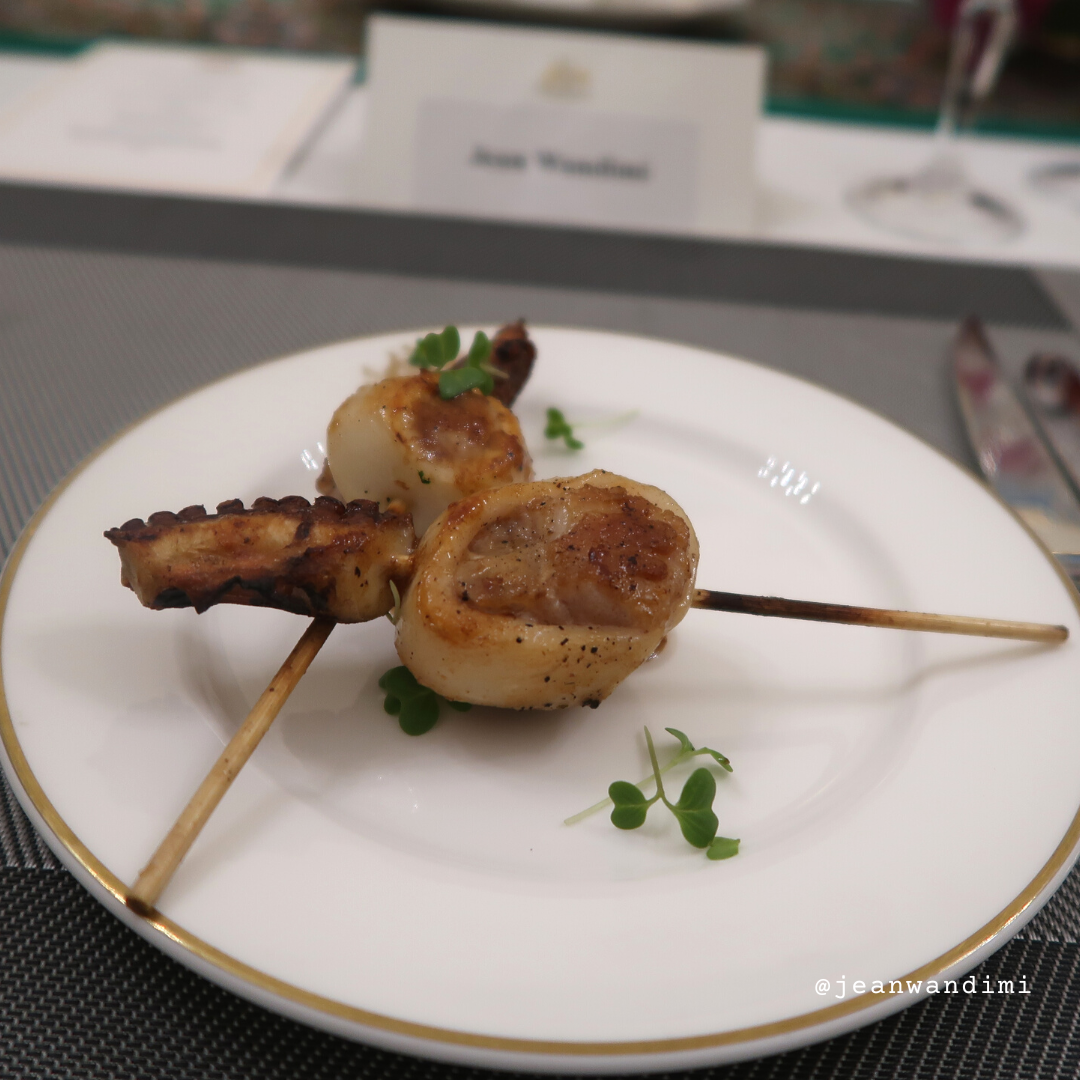
– Tasmania –
Peter Dawson and Tim James met in 1976 at Hardy & Sons and have worked together and apart over the years. They collaborated to produce Dawson James, and the wine is a great testament to their passion and experience.
The vineyards are in Derwent Valley in S. Tasmania, a region with sandy loams and clay soils. The Chardonnay had lemon and green apple flavours and was well balanced. The crisp wine was perfect to start the dinner. The light creaminess of the wine worked well with the octopus skewers.
Rieslingfreak No. 5 (2019) paired with Thai spiced chicken salad
– Clare Valley –
Riesling is one of the original grapes in Australia, with the first vines being planted in 1838 near Penrith, New South Wales. Australia is the second largest Riesling producer in the world after Germany.
The grape variety is planted in many regions in Australia, although most is planted in Clare Valley and Eden Valley. These two regions constitute one-third of Australian Riesling.
You can read more about the history of Riesling in Australia here. When I saw the Rieslingfreak No. 5 bottle, I was intrigued. HE Luke Williams explained that there were 11 Rieslingfreaks. No. 5 was a notable favourite from the winery that only concentrated on this grape variety. John Hughes established Rieslingfreak as a passion project stemming from his huge interest in this special grape. The collection has a number for each wine, depending on where it was produced.
The No 5 was from the Clare Valley. As the grapes were from lighter soils in the valley, the wine was light and almost sweet. The sugar level can vary between vintages, but this one was in between a sweet and an off-dry. This would be a great wine for someone who wants to explore Australian Riesling.
We paired it with a Thai spiced chicken salad.
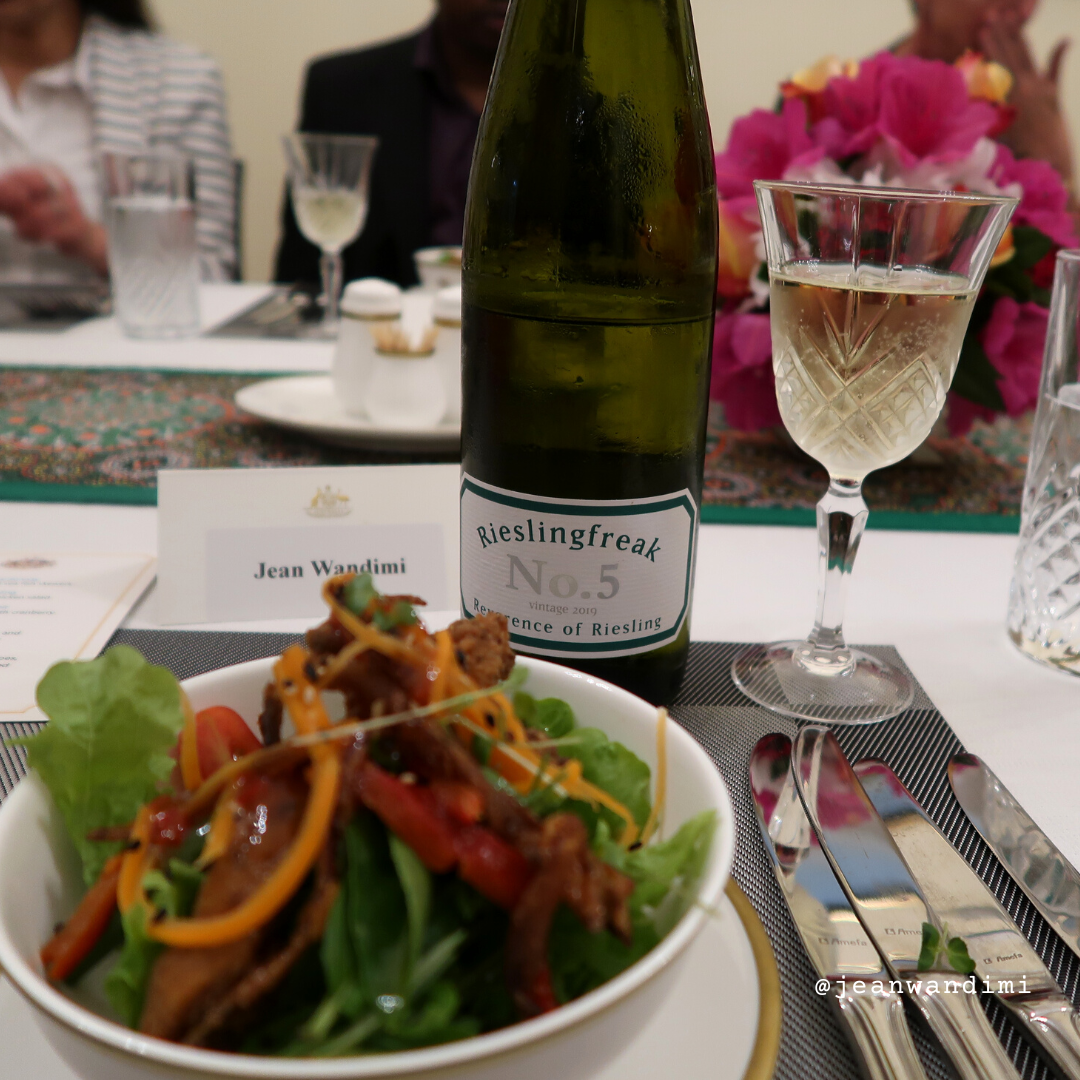
RED WINE
I love when the tasting moves from white to red. And what better way to start the third course than to move to Pinot Noir. One of my favorite Pinot Noirs I tasted was from Australia. I also had some good ones from Germany but I was excited for the next wine.
Giant Steps Pinot Noir (2020) and grilled rolled duck with cranberry sauce.
– Yarra Valley –
The light wine glistened in the crystal glass that it was poured in. We talked about how 2020 must have been a challenging year for winemakers around Australia due to the Coronavirus pandemic, lockdowns and the forest fires that raged through the country. Every time I see a 2020 vintage, I can’t help but think about what went on behind the scenes to get that wine in the bottle.
The Giant Steps Pinot Noir is from the Yarra Valley. The region is known for its Chardonnay and Pinot Noir wines. Phil Sexton set up in Yarra Valley in 1997 and found the perfect climate and terroir for his wines. The region had great soils, cool night temperatures and regular rain.Giant Steps Wine are known throughout the wine world and each collection tells a story. Only a few cases are produced every year. The Giant Steps Pinot Noir 2020 comes from their Yarra Valley range. You can learn more about their wines here.
The wine was light with delicate berry flavours. It paired perfectly with the duck and cranberry sauce. It was great to see how much thought went into each course on the menu.
Clonakilla Hilltops Shiraz (2021) and lamb with mint sauce and assorted vegetables
– New South Wales –
The wine is from 5 vineyards. According to the winemaker’s notes, “Vintage 2021 was marked by a cooler than average summer punctuated by regular rainfall, which slowed the ripening and gave expression to a delicious cool-climate elegance in the wine”. Source
The wine had berry and plum flavours and was deep red. Being one of Australia’s most planted varietals, Shiraz always has exciting flavours and pairs phenomenally with red meat dishes.
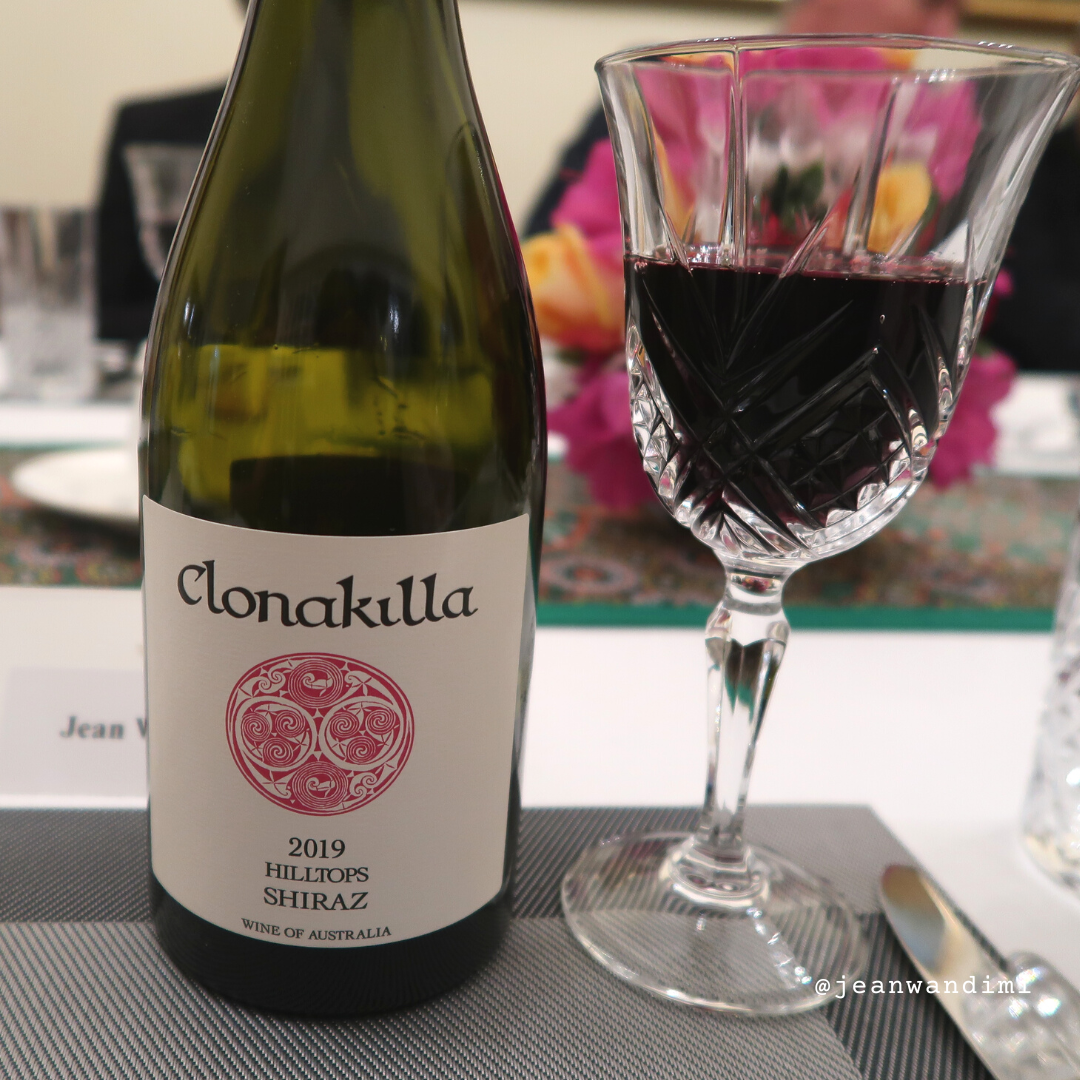
Woodlands Cabernet Sauvignon & Melot (2015) and beef mignons, rosemary potatoes, mushrooms & carrot puree
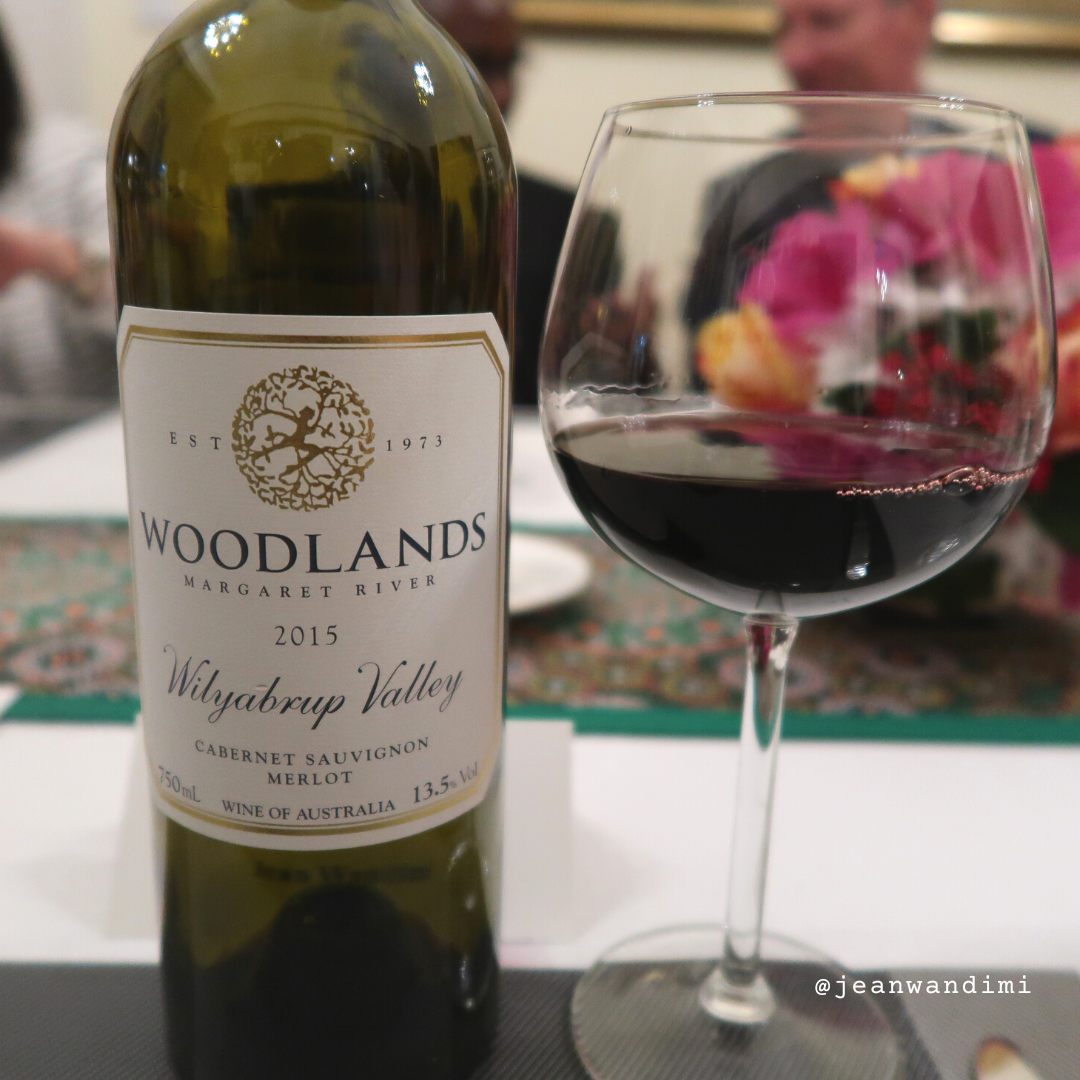
– Margaret River –
This was a favourite for many people. I am a fan of heavier reds, as you may know. The wine was from Margaret River, a region renowned for award-winning Chardonnays and Cabernet Sauvignons. Stemming from a love of Bordeaux blends, the winery aims to create stellar red blends of their own. In this one, the blend had Cabernet Sauvignon and Merlot.
The wine had an intense red colour and was bursting with red plum, berries and spicy notes.
The food was delicious and everyone thanked the team from Carnivore for their impeccable service.
The Australian wine industry at a glance
The Australian wine sector is a $40 billion-per-year industry, supporting more than 10,000 jobs. The country accounts for 4% of the world’s wine production, according to Wine Australia.
Africa has been in the spotlight for many wine-producing countries because, as the economies continue to grow, so do the consumer markets. In East Africa, Kenya, Tanzania, and Rwanda are burgeoning markets for wine producers from all over the world.
Kenya as a market for Australian wine
In Nairobi, Kenya, key supermarkets have wines from around the world. The middle-class wine drinker is more curious and aware of what grapes they are drinking.
I got into the Kenyan wine industry in 2013, and so much has changed since then. In previous posts, I have mentioned how most people would only order “sweet red” or “sweet white” wine but now, people know what grape they are drinking. I covered that in depth in this post.
Some pictures from the dinner






Australian wine in Kenya
In Kenya, the percentage of Australian wine in the market does not compare with other wine-producing countries like South Africa, France and Italy. However, some Australian companies have been eyeing Kenya as a destination for their wines in the next years.
Some of the wines we tasted are not in the Kenyan market. However, if you want to learn more about wines from Australia while in Kenya, you can still find a large quantity of wines to try out.
Currently, the following distributors have Australian wine in their portfolio
– Makkin Wines
– Dion Wines and Spirits
– Viva Distributors
– The Wineshop
In the next years, I predict that more Australian wines will make it to Kenya. More Kenyans are trying wines from different wine regions. Australian winemakers should look at Kenya as the consumer markets are expanding and the typical wine drinker is looking for high-quality wine from all over the world.
One way to start is to research the market, find out which wines would appeal to the Kenyan palate, tastes and preferences and to then contact distributors and partners locally.
To know more about the wine distributors in Kenya, please see this list.
